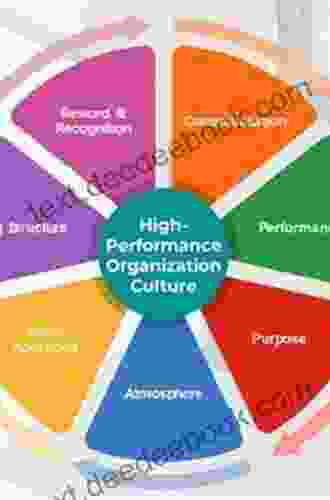Driving Strategy to Execution Using Lean Six Sigma

Lean Six Sigma is a powerful methodology that can help organizations improve their performance and achieve their strategic goals. By combining the principles of Lean manufacturing with the statistical techniques of Six Sigma, Lean Six Sigma provides a comprehensive approach to process improvement that can be applied to any industry or organization.
One of the key benefits of Lean Six Sigma is that it provides a structured framework for driving strategy to execution. By following the DMAIC (Define, Measure, Analyze, Improve, Control) process, organizations can ensure that their improvement efforts are focused on the right areas and that they are achieving the desired results.
The DMAIC Process
The DMAIC process is a five-step methodology that provides a structured approach to process improvement. Each step of the process is designed to help organizations identify and устранить root causes of problems and improve the overall performance of their processes.
- Define: In the Define phase, organizations define the problem or opportunity that they want to address. This involves gathering data and information, identifying the key stakeholders, and developing a project charter.
- Measure: In the Measure phase, organizations collect data on the current state of the process. This data is used to establish a baseline against which improvements can be measured.
- Analyze: In the Analyze phase, organizations analyze the data collected in the Measure phase to identify the root causes of the problem or opportunity. This involves using statistical techniques to identify the most significant factors that are affecting the process.
- Improve: In the Improve phase, organizations develop and implement solutions to the problems identified in the Analyze phase. These solutions may involve changes to the process, the equipment, or the training of employees.
- Control: In the Control phase, organizations monitor the performance of the improved process to ensure that the improvements are sustained. This involves developing control plans and procedures to prevent the process from reverting to its previous state.
Lean Six Sigma Tools and Techniques
Lean Six Sigma provides a wide range of tools and techniques that can be used to improve processes. These tools and techniques can be used to identify and eliminate waste, reduce variation, and improve quality.
Some of the most common Lean Six Sigma tools and techniques include:
- Value stream mapping: Value stream mapping is a technique that is used to identify and eliminate waste in a process. By mapping out the flow of materials and information, organizations can identify areas where waste can be reduced.
- 5S: 5S is a workplace organization system that is used to improve efficiency and reduce waste. 5S stands for sort, straighten, shine, standardize, and sustain.
- Kaizen: Kaizen is a continuous improvement philosophy that is used to make small, incremental improvements to a process. Kaizen events are typically short-term, focused improvement efforts that involve all of the employees in a process.
- Statistical process control (SPC): SPC is a technique that is used to monitor and control the performance of a process. SPC charts are used to track the variation in a process and to identify when the process is out of control.
- Design of experiments (DOE): DOE is a technique that is used to test different factors to determine their effect on a process. DOE can be used to optimize the performance of a process by identifying the best combination of factors.
Benefits of Lean Six Sigma
Lean Six Sigma can provide a number of benefits for organizations, including:
- Improved quality: Lean Six Sigma can help organizations improve the quality of their products and services by reducing defects and errors.
- Reduced costs: Lean Six Sigma can help organizations reduce costs by eliminating waste and improving efficiency.
- Increased customer satisfaction: Lean Six Sigma can help organizations improve customer satisfaction by providing them with higher quality products and services.
- Improved employee morale: Lean Six Sigma can help improve employee morale by giving employees the tools and training they need to improve their work processes.
- Increased innovation: Lean Six Sigma can help organizations increase innovation by providing a structured framework for problem-solving and improvement.
Lean Six Sigma is a powerful methodology that can help organizations improve their performance and achieve their strategic goals. By following the DMAIC process and using the Lean Six Sigma tools and techniques, organizations can identify and eliminate waste, reduce variation, and improve quality. This can lead to a number of benefits, including improved quality, reduced costs, increased customer satisfaction, improved employee morale, and increased innovation.
If you are interested in learning more about Lean Six Sigma, there are a number of resources available online and through professional organizations. You can also find Lean Six Sigma training programs that can teach you the skills and knowledge you need to implement Lean Six Sigma in your organization.
Do you want to contribute by writing guest posts on this blog?
Please contact us and send us a resume of previous articles that you have written.
 Book
Book Page
Page Chapter
Chapter Story
Story Reader
Reader Library
Library Paperback
Paperback Magazine
Magazine Paragraph
Paragraph Bookmark
Bookmark Foreword
Foreword Preface
Preface Synopsis
Synopsis Annotation
Annotation Tome
Tome Bestseller
Bestseller Classics
Classics Narrative
Narrative Memoir
Memoir Reference
Reference Dictionary
Dictionary Thesaurus
Thesaurus Narrator
Narrator Librarian
Librarian Catalog
Catalog Stacks
Stacks Archives
Archives Scholarly
Scholarly Lending
Lending Journals
Journals Reading Room
Reading Room Special Collections
Special Collections Interlibrary
Interlibrary Thesis
Thesis Dissertation
Dissertation Storytelling
Storytelling Reading List
Reading List Book Club
Book Club Theory
Theory Textbooks
Textbooks Diana Drew
Diana Drew Delores Fossen
Delores Fossen Ednah Walters
Ednah Walters Eddie Cleveland
Eddie Cleveland Clark Aldrich
Clark Aldrich James Vaughan
James Vaughan David L Chappell
David L Chappell Nancy Curteman
Nancy Curteman Clare Youngs
Clare Youngs Jill Jones
Jill Jones C Mark Johnson
C Mark Johnson Christina B Carroll
Christina B Carroll D L Orton
D L Orton Tom Inglis
Tom Inglis Torry Terry
Torry Terry Oded Szabo Melamed
Oded Szabo Melamed Marilyn Chin
Marilyn Chin Emily Cier
Emily Cier Sophie Hannah
Sophie Hannah Yuichi Ishikawa
Yuichi Ishikawa
Light bulbAdvertise smarter! Our strategic ad space ensures maximum exposure. Reserve your spot today!

 Anthony BurgessMastering the New Media Landscape: A Comprehensive Guide to Navigating the...
Anthony BurgessMastering the New Media Landscape: A Comprehensive Guide to Navigating the... Fred FosterFollow ·5.4k
Fred FosterFollow ·5.4k Sidney CoxFollow ·2.6k
Sidney CoxFollow ·2.6k Dallas TurnerFollow ·8.1k
Dallas TurnerFollow ·8.1k John MiltonFollow ·15.7k
John MiltonFollow ·15.7k Damon HayesFollow ·8.2k
Damon HayesFollow ·8.2k Clayton HayesFollow ·4.2k
Clayton HayesFollow ·4.2k W.B. YeatsFollow ·12k
W.B. YeatsFollow ·12k Jonathan HayesFollow ·8.5k
Jonathan HayesFollow ·8.5k

 Jack Powell
Jack PowellThe United Nations Renaissance: A New Era of Global...
The United Nations was founded in 1945 in...

 Banana Yoshimoto
Banana YoshimotoMastering the Art of Critical Analysis: A Comprehensive...
Ida B. Wells-Barnett, a...

 Brian West
Brian WestWhat You Need To Know About The Inner Lives Of Men:...
Understanding the...
















